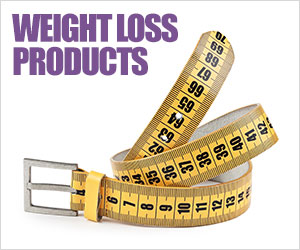Keeping a Food Diary for Weight loss

For those of us who want to lose weight, a food diary can be invaluable.
Despite this, in a recent survey we did of visitors to weightloss.com.au, only 25% of respondents have used one!
This article explains what a food diary is, what it is used for, how it benefits those of us with weight loss goals, how to complete the free food diaries provided on this site and provides some tips to make the whole process as effective and as simple as possible.
What is a food diary?
Put simply, a food diary is used to record what we eat and drink each day.
Typically, a basic food diary is designed to record:
- When we eat and drink
- What we eat and drink
- How much we eat and drink
- How many grams of Protein, Carbohydrates, Fat and Kilojoules or Calories are contained in what we eat and drink
The basic food diary contain on this site also records:
- Our energy (Kilojoule or Calorie) target each day
- What supplements we take and there nutritional value
- How many glasses of water we drink each day
- The number of surplus (more) or deficit (less) Kilojoules or Calories we consume versus our daily target
In addition to a basic food diary, weightloss.com.au also offers the following other free food diaries:
- An emotional eating food diary
- A sugar, salt and fat food diary
- A fibre, calcium and omega-3 food diary
- An iron, magnesium and potassium food diary
- An alcohol, caffeine and cigarette food diary
Each of these food diaries records our total energy intake versus our daily target but also allows us to focus on individual problem areas or areas that we particularly want to modify.
Why use a food diary?
The main reason we should use a food diary is to make positive changes to our diets.
The reasons that a food diary is superior to relying on our memory are that food diaries are far more accurate (little pieces of chocolate aren't forgotten), and are easier to analyse because they contain more information than just what is eaten.
From a weight loss perspective, by recording exactly what and how much we eat and drink each day, we can better understand why we're putting on weight and what needs to be modified in our diet to help us lose weight and/or increase certain nutrients in our diet.
If we ever visit a dietitian to get help with our diet, the first thing they will ask us to do is to keep a food diary for a week or two so that they can analyse what we're eating and recommend changes that will help us reach our weight loss goal.
How a food diary can help aid weight loss
Here are some of the great things a food diary can do to help us lose weight:
- Break down our weight loss goals into manageable chunks (daily energy targets)
- Plan future menu and eating patterns
- Record our actual eating patterns
- Record other important "peripheral information"
- Better understand and manage our eating habits and portion sizes
- Break unhealthy and emotional eating
- Take the guess work out of the weight loss equation
- See how balanced our diet is
- Improve our nutrition
- Stay motivated
- Stop unconscious eating
- Provide a hard record of our successes
How to complete the free food diaries on weightloss.com.au
Generally, food diaries are meant to be kept for at least a week or two, but studies have shown that even keeping track of what we eat for a day or two can help us make positive changes to our diets.
Some people keep a food diary indefinitely to help them maintain a healthy weight range once it's helped them achieve their ideal weight.
How long we keep a food diary is going to be a matter of personal choice, the most important thing is to start using one and when we feel that we don't need to anymore, we can stop.
Let's have a look at how to fill out each field contained in each of the food diaries offered on this site (but before we do remember, we don't need to fill out every detail specified in order to get at least some benefit from these food diaries):
Basic Food Diary
Energy Goal: Simply write down your target number of kilojoules or calories for the day.
To calculate how many kilojoules or calories you need to maintain your current weight visit our Daily Energy Needs Calculator.
Date: Write down the relevant date.
Time: Write down the time of each meal (there is an option to record up to six meals per day, including snacks).
Food/Drink Item: Write a description of what you eat and drink at each meal (e.g. Salad Sandwich).
Qty: Write down how many serves of the food/drink item you consume (e.g. 2).
Protein: (Optional) Write down how many grams of protein are contained in what you've consumed - for this information refer to the nutritional information panel printed on the packaging of the food and drink you consume or consult a set of nutritional tables.
Carbs: (Optional) Write down how many grams of carbohydrates are contained in what you've consumed - for this information refer to the nutritional information panel printed on the packaging of the food and drink you consume or consult a set of nutritional tables.
Fat: (Optional) Write down how many grams of fat are contained in what you've consumed - for this information refer to the nutritional information panel printed on the packaging of the food and drink you consume or consult a set of nutritional tables.
KJ / Cals: Write down the total number of kilojoules or calories contained in each food or drink item consumed.
Energy Subtotal: Add up all the kilojoules or calories contained in all the foods and drinks consumed for each meal and write this figure down in the far right column.
Supplements Table: Record all of the information as above for any supplements taken throughout the day.
Total Energy Intake: Add the two energy subtotal numbers together (if relevant) and write the result in the far right column.Calculation: Write down the total energy intake number in the first field and your energy goal for the day in the second field. Now subtract the second number from the first and the result will equal your surplus (more) or deficit (less) kilojoules or calories for the day.
Water Consumed: Each time you drink a glass of water (200 - 250ml) simply tick one of the boxes provided.
Emotional eating food diary
Use this food diary if you think you are an emotional eater who often eats when not really hungry.
Instead of recording the amount of protein, carbohydrates and fat in the foods and drinks you consume, record where you ate/drank (e.g. home or office), what you were doing at the time (e.g. working, watching TV) and what mood you were in at the time (e.g. happy, depressed).
Sugar, salt and fat food diary
Use this food diary if you think you might be eating too much sugar, salt or fat in your diet.
Instead of recording the amount of protein and carbohydrates in the foods and drinks you consume, record how much sugar and salt as well as fat they contain instead.
Fibre, calcium and omega-3 food diary
Most of us should be consuming more fibre, calcium and omega-3 fatty acids for weight loss and optimal health and this food diary is designed to help us do just that.
Instead of recording the amount of protein, carbohydrates and fat in the foods and drinks you consume, record the fibre, calcium and omega-3 they contain instead.
Iron, magnesium and potassium food diary
Most of us should be consuming more iron, magnesium and potassium for optimal health and this food diary is designed to help us do just that.
Instead of recording the amount of protein, carbohydrates and fat in the foods and drinks you consume, record the amount of iron, magnesium and potassium they contain instead.
Alcohol, caffeine and cigarette food diary
Over consumption of alcohol, caffeine and cigarettes often accompany or form part of our bad eating habits.
Use this food diary if you think that this applies to you and you would like to track your consumption of these 'undesirables' and understand how each is interrelated.
Instead of recording the amount of protein, carbohydrates and fat in the foods and drinks you consume, record your how much alcohol and caffeine they contain and how many cigarettes you smoke.
Food diary tips
Here are some general food diary tips to make sure they work for you and are as easy to use as possible:
- Don't change your eating habits while you're keeping your food diary.
- Be honest and write everything down.
- Keep your diary with you at all times
- Use the KISS Principle and keep it simple.
- The nutrition information you record (kilojoules, etc) doesn't need to be accurate to the hundredth percentile, just accurate enough to be helpful.
- Wait until the end of the day to add up your totals.
- Draw up a page that lists the foods you eat most often and refer to it each time you record those foods.
- For the most accurate results, use the nutritional information panel on the packaging of the foods you eat.
- If you are generally satisfied with the day's food intake, give yourself a mental pat on the back and relish the day's accomplishment.
- If you feel disappointed in what you read, remind yourself that it is only one day in a lifetime of thousands of days. Forgive yourself and start over.
- Analyze what you eat and make the necessary changes.
- Start recording today.
- If you need help, visit a registered dietitian or weight loss professional.
Conclusion
For those of us who want to lose weight, a food diary can be invaluable.
Despite this, in a recent survey we did of visitors to weightloss.com.au, only 25% of respondents have used one!
This article explained what a food diary is, what it is used for, how it benefits those of us with weight loss goals, how to complete the free food diaries provided on this site and provided some tips to make the whole process as effective and as simple as possible.
Good luck with your weight loss and thanks for visiting weightloss.com.au.
© Copyright Ultimate Weightloss.
This article was written by Scott Haywood.
Scott is the editor of weightloss.com.au. Scott has developed an expertise in fitness and nutrition, and their roles in weight loss, which led him to launch weightloss.com.au in 2005. Today, weightloss.com.au provides weight loss and fitness information, including hundreds of healthy recipes, weight loss tools and tips, articles, and more, to millions of people around the world, helping them to lead happier, healthier, lives.
You can follow Scott on Google+ for more interesting articles.





















